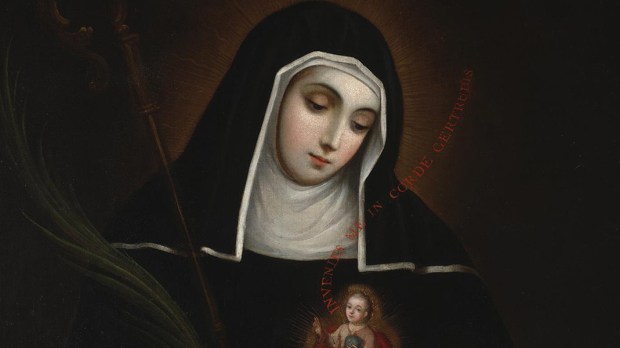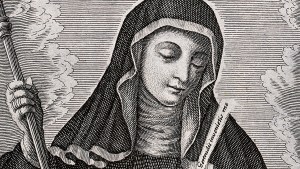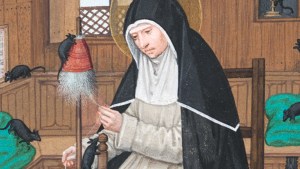Lenten Campaign 2025
This content is free of charge, as are all our articles.
Support us with a donation that is tax-deductible and enable us to continue to reach millions of readers.
While most monasteries in the modern era require a minimum age of 18 years old for entrance, the convents of the 13th century were much different.
St. Gertrude the Great reportedly entered the monastery when she was only five years old.
Childhood at the monastery
Pope Benedict XVI explained the reasoning behind this early entrance in a general audience in 2010:
Gertrude was born on January 6, 1256, on the Feast of the Epiphany, but nothing is known of her parents nor of the place of her birth…When she was five years old, in 1261, she entered the monastery for formation and education, a common practice in that period.
This practice is similar to the modern concept of boarding schools, as these young girls were not technically part of the community, but simply lived at the monastery for education.
However, this exposure to religious life greatly formed St. Gertrude, preparing her for the future, as Pope Benedict XVI explains:
Here she spent her whole life, the most important stages of which she herself points out. In her memoirs she recalls that the Lord equipped her in advance with forbearing patience and infinite mercy, forgetting the years of her childhood, adolescence and youth, which she spent, she wrote, “in such mental blindness that I would have been capable… of thinking, saying or doing without remorse everything I liked and wherever I could, had you not armed me in advance, with an inherent horror of evil and a natural inclination for good and with the external vigilance of others. “I would have behaved like a pagan… in spite of desiring you since childhood, that is since my fifth year of age, when I went to live in the Benedictine shrine of religion to be educated among your most devout friends” (ibid., II, 23, p. 140f.).
The rare experience of living in a monastery at such a young age was beneficial for St. Gertrude, who would later be drawn into a deep personal relationship with Jesus Christ.



